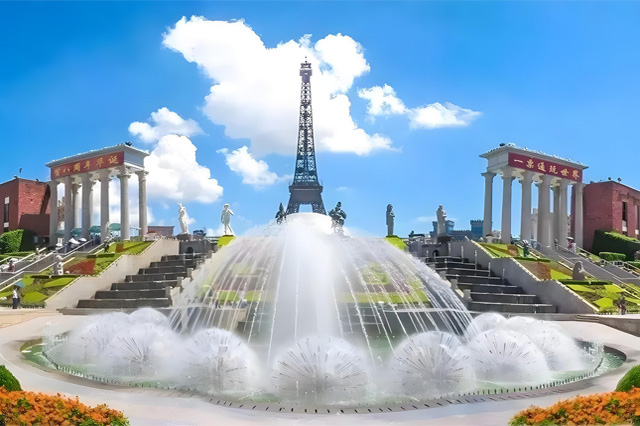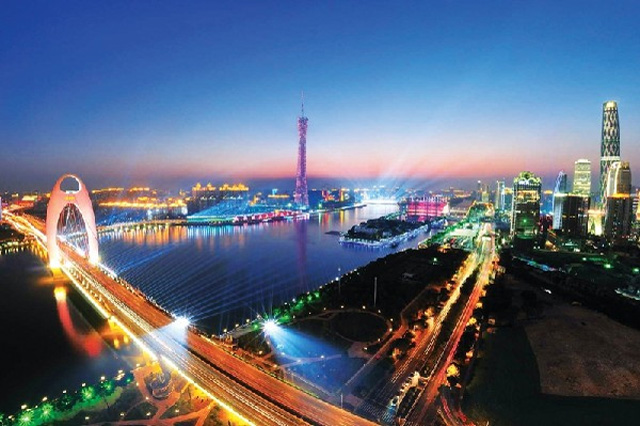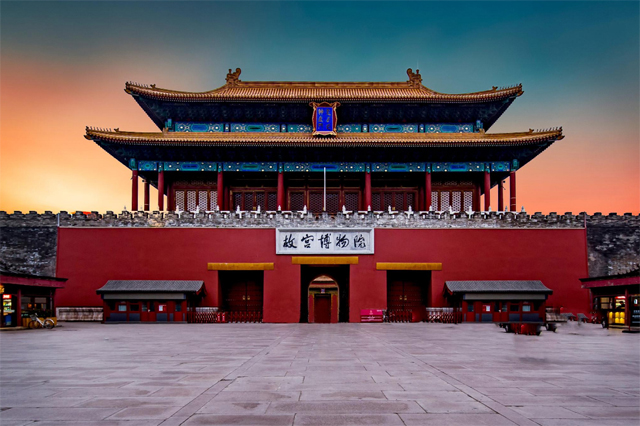Guizhou 5A tourist attractions summary, take you to play around the hometown of 100 festivals!
- China Tourism
- 2025-05-05 11:23
- 148
Guizhou Province, referred to as "Qian" or "Gui", is located on the Yunnan-Guizhou Plateau. It is an important hub connecting South China and Central China in the southwest. It is a necessary place for the new land-sea passage in the west. It is a connection between the Guangdong-Hong Kong-Macao Greater Bay Area and the Chengdu-Chongqing Twin Cities Economic Circle An important fulcrum. Guizhou is a province where many ethnic groups live together. It is known as "a thousand islands of culture" and "the first movement of prehistoric culture". Next, I'll give you a summary of Guizhou's 5A-level tourist attractions and take you to the hometown of 100 festivals!
1. Huangguoshu Scenic Area
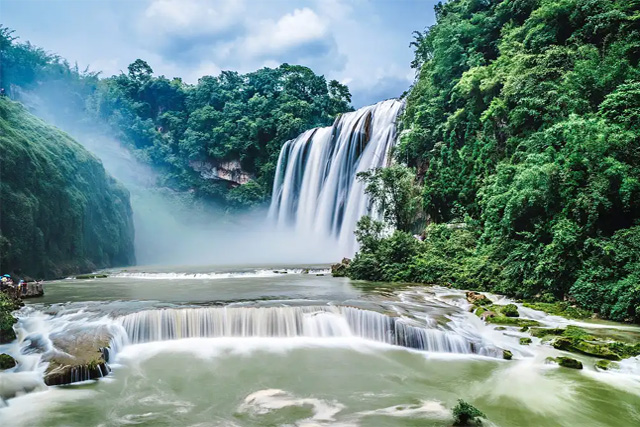
Huangguoshu Scenic Area is located in the southwest of Guizhou Province. With Huangguoshu Waterfall as the center, there are 18 waterfalls with different styles of male, strange, dangerous and beautiful, forming a huge waterfall "family". The waterfall group with Huangguoshu Falls as the core was recognized as the world's largest by the Guinness World Headquarters and was recorded in the Guinness World Records. The scenic area has a variety of karst landforms. Among them, Huangguoshu Waterfall is located on the Baishui River, a tributary of the Dabang River. There are many rapids and waterfalls in this area, and the hydrological conditions are complex. It also contains rich biological resources unique to karst landforms, including 25 Major wild animals.
2. Longgong Scenic Area of Anshun City
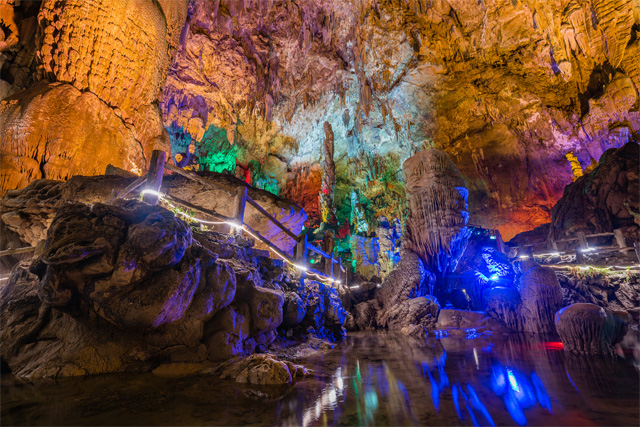
The Longgong Scenic Area of Anshun City is located in Longgong Town, Xixiu District, Anshun City, Guizhou Province. It integrates karst caves, canyons, waterfalls, peak forests, cliffs, rivers, stone forests, funnels, underground rivers and other karst geological landscapes. It is the most concentrated and comprehensive scenic spot for karst landforms, and is known as "Karst in the world, all in the Dragon Palace". Longgong Scenic Area is composed of two major theme areas: Longtan Secret Realm and Tongxuan Pastoral Area. It has the longest and most beautiful water cave in China, the largest cave in China, the largest karst waterfall in China, the lowest natural radiation rate in the world measured by the China Atomic Energy Agency, the world's largest flood and drought cave cluster, the world's largest plant Chinese character "dragon" and other unique natural resources, and diverse ethnic cultures dominated by Buyi and Miao.
3. Baili Rhododendron Scenic Spot in Bijie City
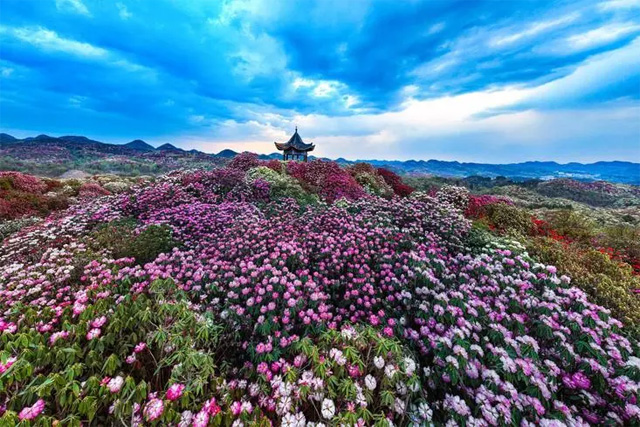
Baili Rhododendron Scenic spot in Bijie City, located in the northwest of Guizhou Province, at the junction of Dafang County and Qianxi County in Bijie City, Guizhou Province, is the largest rhododendron scenic spot in the country. Baili Rhododendron is actually a magnificent natural garden, named after the natural azalea sea. Because of the large area of native rhododendron forest as the main feature, the rhododendron forest has a bandwidth of 1~3 kilometers, stretching for more than 50 kilometers, stretching for hundreds of miles, so it is called "hundred-mile rhododendron". Baili Rhododendron Scenic Area is known as "the largest natural garden in the world" and enjoys the reputation of "Earth Ribbon and World Garden.
4. Qiannan Buyi and Miao Autonomous Prefecture Zhangjiang Scenic Area
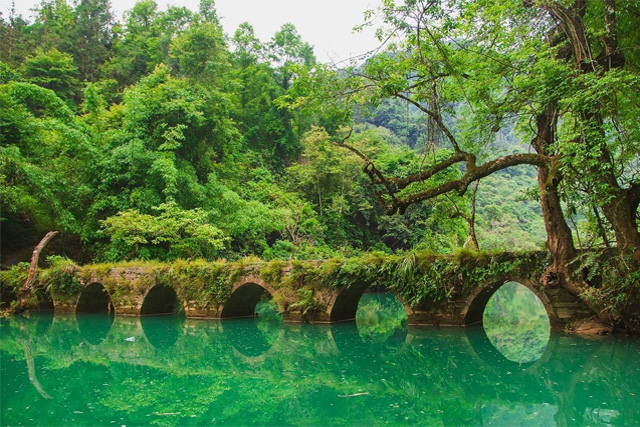
The Zhangjiang Scenic Area of Qiannan Buyi and Miao Autonomous Prefecture is located in Libo County, Qiannan Buyi and Miao Autonomous Prefecture, Guizhou Province. It is composed of Daqikong Scenic Area, Xiaoqikong Scenic Area, Shuichun River Scenic Area and Zhangjiang Scenic Belt. There are 48 representative scene sources, including 4 super-grade scene sources, 6 first-grade scene sources, 10 second-grade scene sources, 16 third-grade scene sources and 12 fourth-grade scene sources. As an important part of the Zhangjiang River scenic spot in Libo, it has become an important symbol of tourism in Libo County.
5. Qingyan Ancient Town
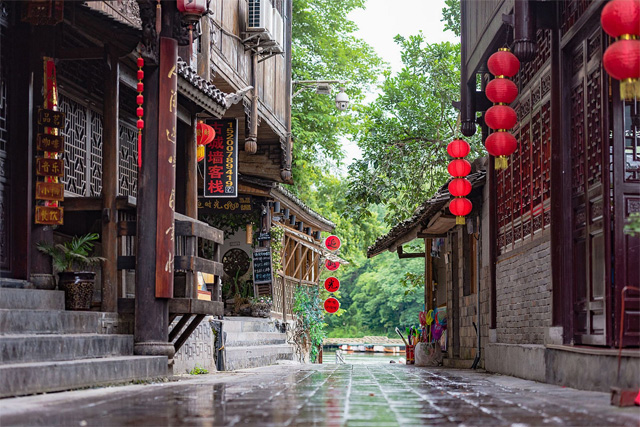
Qingyan Ancient Town, located in the south of Huaxi District, Guiyang City, Guizhou Province, is a military town of the Ming and Qing Dynasties. Qingyan ancient town covers an area of 3 square kilometers, and the total planned area of the scenic spot is about 5.8 square kilometers. The streets and lanes are paved with stone. The residential houses are also stone walls, counters and courtyards. The layout of the town follows the pattern of the Ming and Qing dynasties, with well-preserved doors, waist doors, tile roofs, overhanging mountains and wooden doors, reflecting the architectural style of the Ming and Qing dynasties. There are 4 main streets, 26 small streets and lanes in Qingyan ancient town, including buildings, platforms, pavilions, pavilions, temples, temples, palaces, shrines, pagodas, courtyards and many other monuments.
6. Tongren Fanjing Mountain Tourist Area
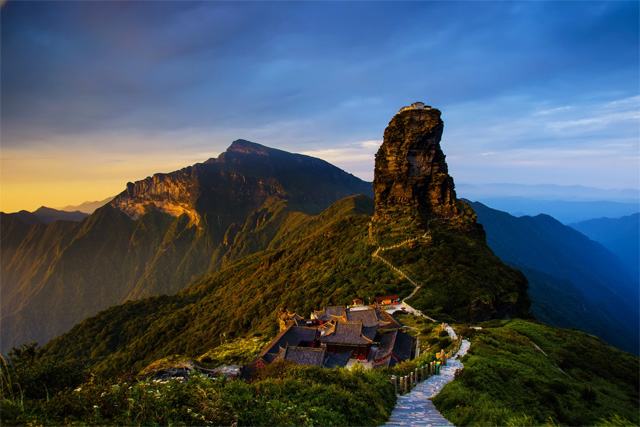
Tongren Fanjing Mountain Tourist Area, located in Tongren City, Guizhou Province, is a national AAAAA-level tourist attraction. Fanjing Mountain is the main peak of Wuling Mountains. The name of Fanjing Mountain comes from "Brahma Pure Land". The main scenic spots in the Jingshan tourist area are Mushroom Stone, Huangdong, Wanjushu, Laojin Ding, Buddha-worshipping platform, Phoenix Seeking Phoenix, Hongyun Jinding, Chengen Temple, etc. Fanjing Mountain tourist area has east and west gates, east gate in Jiangkou County, west gate in Yinjiang County. It is customary to call the route from the east gate to the mountain the east route and the route from the west gate to the mountain the west route.
7. Zhenyuan Ancient City
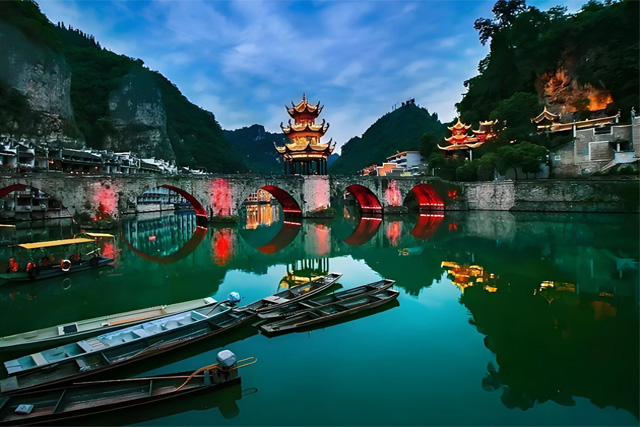
Zhenyuan Ancient Town, also known as Zhenyuan Ancient Town, is located in Zhenyuan County, Qiandongnan Miao and Dong Autonomous Prefecture, Guizhou Province. The ancient city has a history of more than 2280 years since the establishment of a county in the 30 years (the first 277 years) of King Qin Zhao. The north bank of the ancient city of Zhenyuan is the old government city and the south bank is the old Acropolis, which is quite similar to the Taiji diagram from a distance. The two cities were built in the Ming Dynasty, and some of the city walls and gates are still in existence. There are a large number of ancient buildings, traditional houses and historical docks inside and outside the city. The ancient city has nearly 200 places of interest, such as eight guild halls, four holes, eight shrines, nine temples, twelve docks, Wu Wang Cave, four palaces, ancient wells, ancient theater buildings and so on. Zhenyuan has been the political, economic, cultural center and military center in eastern Guizhou since the Song Dynasty.
8. Chishui Danxia Tourist Area, Zunyi City
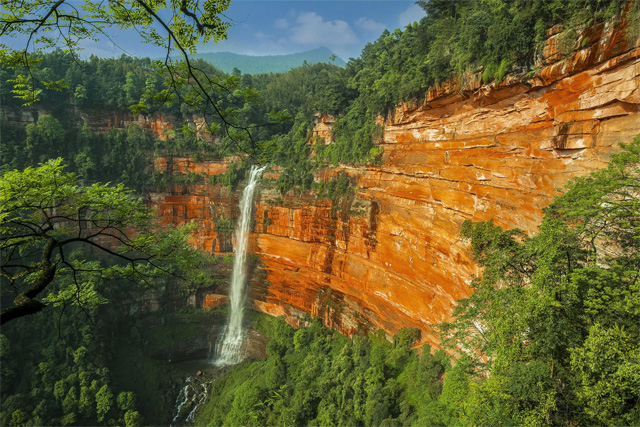
Chishui Danxia Tourist Area of Zunyi City is located in Chishui City, Zunyi City, Guizhou Province. It is composed of three scenic spots: Chishui Waterfall, Foguang Rock and Swallow Rock. It takes Danxia landform, waterfall group, bamboo sea, Alsophila spinulosa and virgin forest as its main features, forming various landscape types such as mountains, valleys, waterfalls, lakes, rivers, villages, cherished animals and plants and animals, it is the epitome of "the city of thousands of waterfalls, the crown of Danxia, the hometown of bamboo, and the kingdom of Alsophila spinulosa". It is the Danxia landform area with the best configuration of mountains, water and forests. It is the most typical, beautiful, diverse ecological environment in the world. The representative of Danxia landscape with the best landscape configuration is rare in the world.
9. Bijie Zhijin Cave Scenic Area
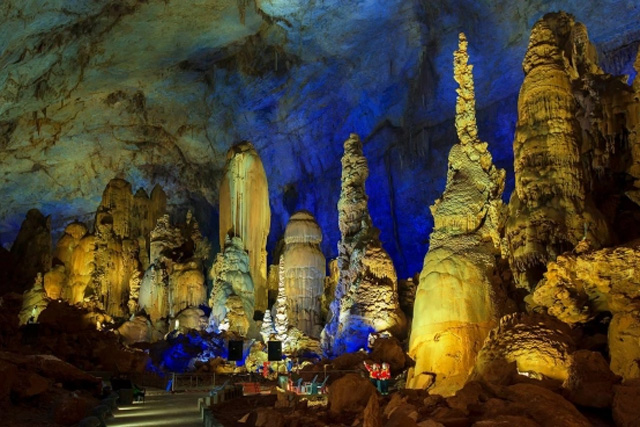
Bijie Zhijin Cave Scenic Area, located in Zhijin County, Bijie City, Guizhou Province, is the main park of Zhijin Cave World Geopark. In Zhijin Cave scenic area, there are karst ditches, karst grooves, steep river valleys, Tiansheng Bridge and karst caves everywhere. The main scenic spots are Wangyue Tower, Tallinn, Nantianmen Gate, Wanshou Mountain, Wangshan Lake, Guanghan Palace, Xuexiang Palace, Lingxiao Palace, Tiandu Square, Yinyu Palace, etc. Zhijin Cave Scenic Area is composed of Zhijin Cave, Qijie River and Dongfeng Lake, which respectively represent different karst development processes. It is a tourist attraction integrating science popularization, exploration, research, sightseeing and vacation.
10. Wanfeng Forest Scenic Spot in Qianxinan Prefecture
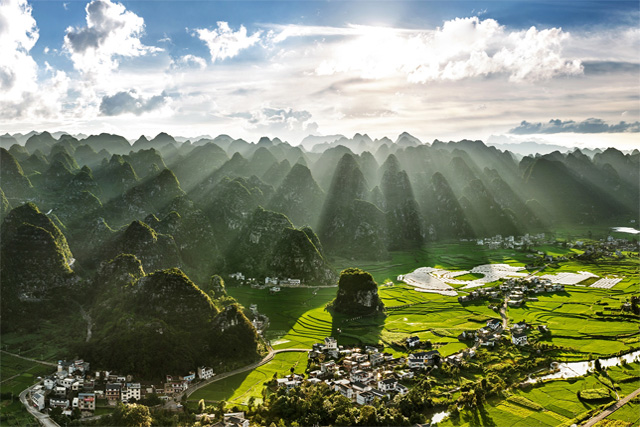
Wanfeng Forest Scenic Area in Qianxinan Prefecture, located in the southeast of Xingyi City, Guizhou Province, is a national 5A-level tourist attraction. It is mainly a conical peak forest and peak cluster landscape developed with Triassic stratigraphic rocks. Various geological relic landscapes such as underground rivers, sinkholes and sedimentary strata are distributed among them. Wanfeng Forest Scenic Area is divided into East and West Peak Forest, with different landscapes, including Wanfo Temple, Bagua Field, National Cultural Source Expo and many other scenic spots. It is the most typical, complete and concentrated development in the world's karst geology and landforms. One of the places is known as the "Chinese Cone Karst Museum".
This article is edited and published by Journey Mark. If you have any questions, please feel free to contact us at any time.
Article Link:https://www.topvvv.com/en/China/126.html

